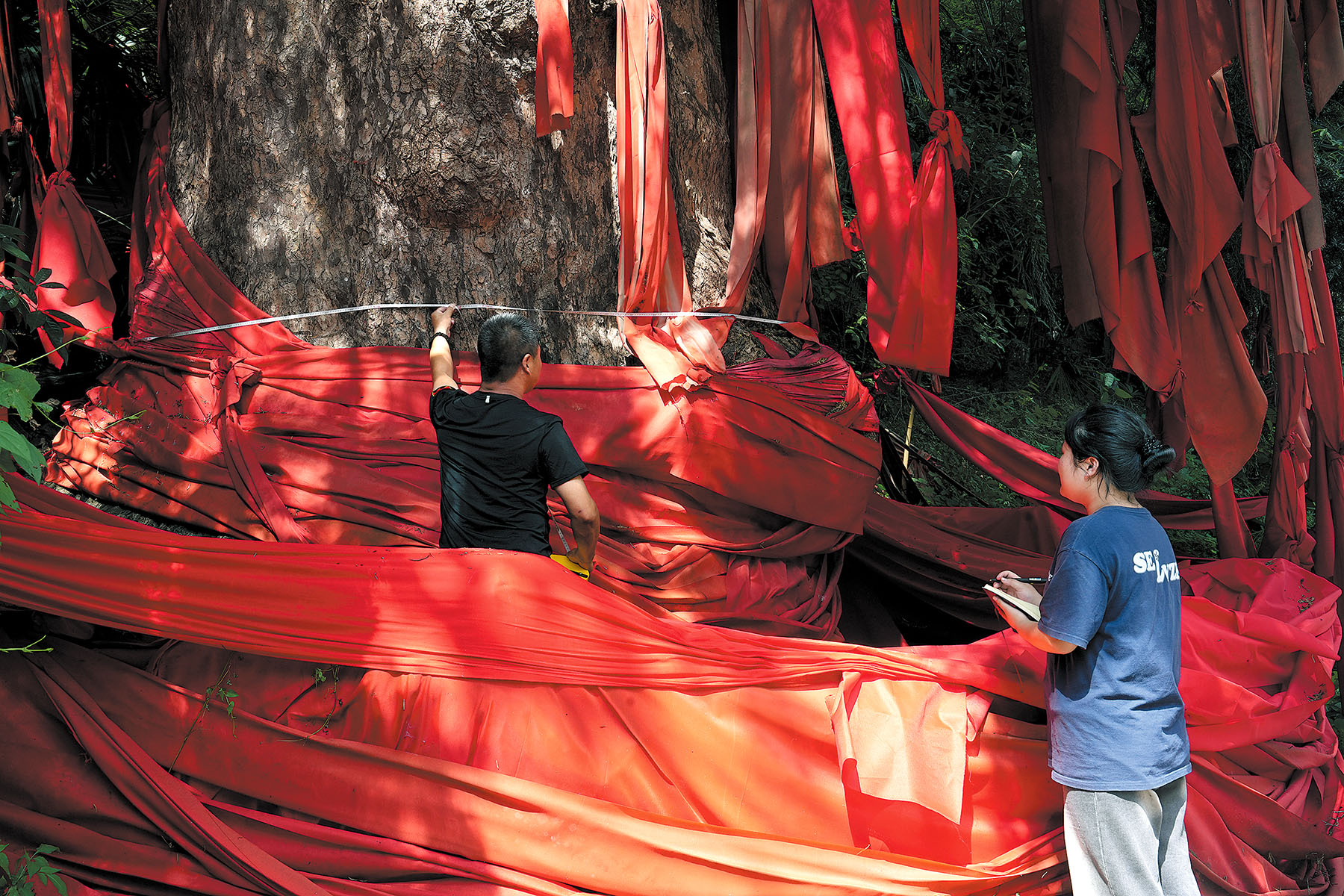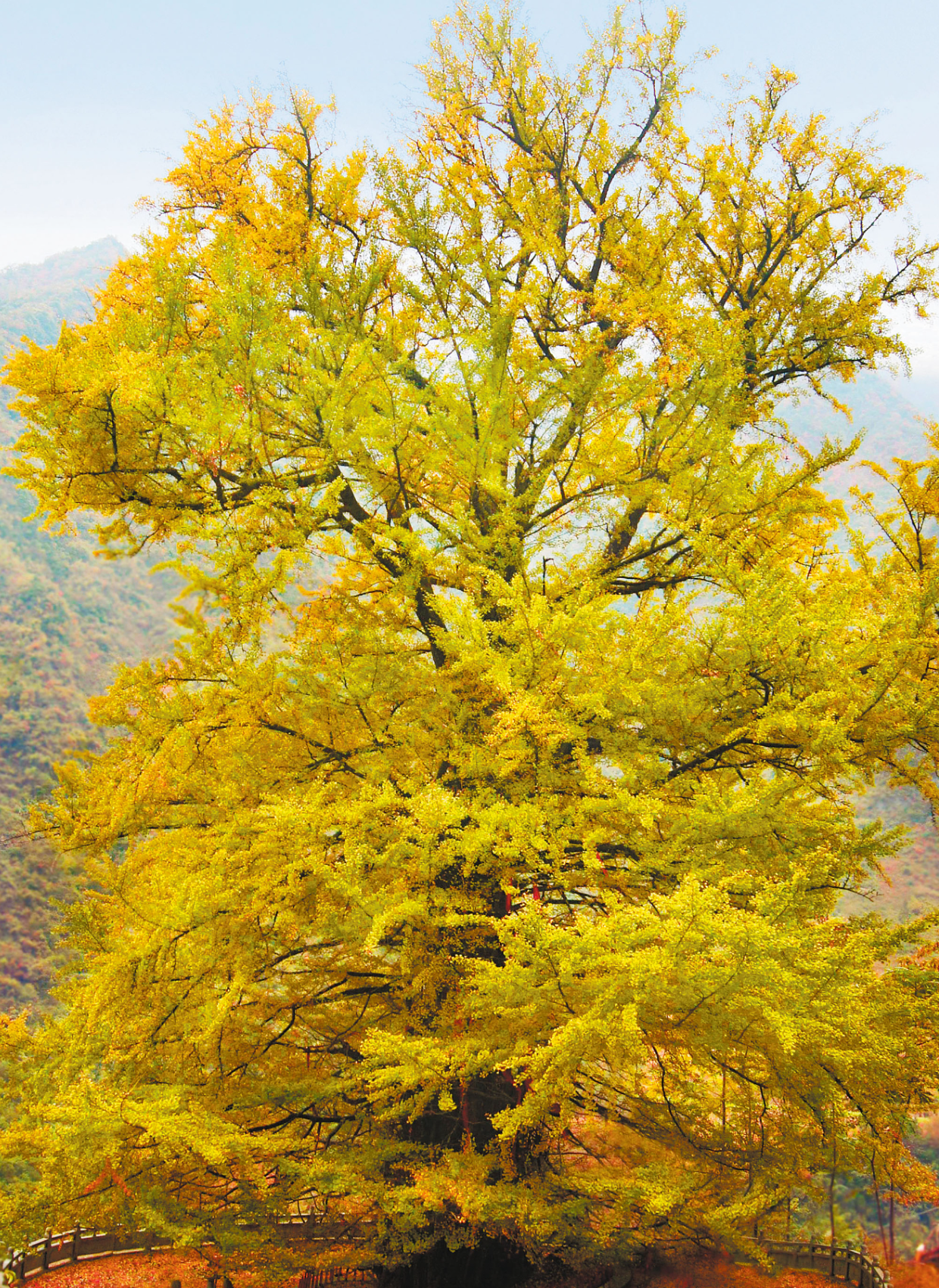Green-fingered 'guardians' ensure centuries-old plants still thriving

Aculture of protecting ancient trees is deeply rooted among the residents of Chengkou county in Southwest China's Chongqing. Having lived side by side with these majestic ginkgos, Chinese honeylocusts, Lindera megaphylla and camphor trees for generations, the local people treat them with the same love and care as they would a family member.
One such tree, a 30-meter-tall, 1,900-year-old ginkgo, stands resplendent in the county's Mingzhong township. The canopy of the living fossil stretches out to a whopping 1,320 square meters, and it ranked top among the "tree kings" of Chongqing in 2011.
"I have a special emotional connection with the tree and feel a responsibility to protect it," said 52-year-old Xiang Yibing, who has been appointed the "guardian" of the ginkgo tree.
Tree guardians are like caretakers of the ancient trees and are appointed by the local forestry bureau.
"Stewed chicken with its ginkgo nuts was the most delicious meal I had in my childhood," said Xiang, who grew up alongside the tree, as his house is only a five-minute walk from it.
READ MORE: Protection of ancient trees an act of pride for ranger
He said the tree is rarely troubled by disease or pests, but he still visits it every one or two days to ensure there are no issues caused by natural disasters or deliberate harm.
The local authorities can use the Forest Law and the Wild Plant Protection Regulations to punish any destructive behavior, but there have been no cases of human-induced damage in the local area, said Weng Xuanjun, an official from the forestry bureau in Chengkou.
On the contrary, local people consider the ancient trees sacred and they are a subject of worship.
Chengkou has 240,000 hectares of forests, with more than 1,100 certified wild ancient trees, including 14 national first-class, 28 second-class and 243 third-class ancient trees, and over 800 county-level ancient trees, according to government figures.
To protect the trees, local authorities have taken a range of protection and rejuvenation measures such as creating tree profiles, assigning tree guardians, engaging private tree doctors and installing monitoring systems.
During a visit to see ancient cypress trees along the ancient shudao (roads to today's Sichuan province) in Jiange county in July last year, President Xi Jinping underscored the significance of preserving ancient and renowned trees, as well as upholding excellent traditional Chinese culture around them.
As a hidden gem in the Daba Mountains, Chengkou in northernmost Chongqing borders the provinces of Shaanxi to the north and Sichuan to the west. It is a major corridor connecting the Qinling and Daba mountains with a history dating back to the Qin Dynasty (221-206 BC).
"These ancient trees, some of which show signs of weakening, are centuries, or even millennia old," said Zhang Guohao, an expert in ancient tree rejuvenation and protection at the Chongqing Forestry Research Institute. "We may lose them forever if they are not effectively protected."

Zhang said the ancient trees are at a higher risk of dying due to natural disasters such as floods, droughts, wind damage and pest infestations.
"It is crucial that we recognize and harness the ecological, economic and cultural value of these trees, prepare in advance and strengthen their protection, especially those particularly valuable ones," he said.
Since 2014, the local forestry bureau has employed third-party professional research institutions to conduct investigations on local ancient trees. By 2017, they had completed the identification, registration, documentation, announcement and listing of over 1,100 ancient trees, according to Weng from the bureau.
The Ancient Tree Catalog of Chengkou County details archived electronic information on each ancient tree — including their identification numbers, names, ages, species, locations, ownership and growth status. Each tree has its own QR code with its information on it.
For example, to protect the almost 2,000-year-old ginkgo, a local ancient tree protection project was carried out that included protective repairs to the tree and its surrounding environment.
Specialists were dispatched to prune and remove pests from the tree, as well as clear away weeds.
Xiang said the ancient ginkgo tree he cares for attracts a large number of visitors, particularly during holidays and in August and September — when it casts a stunning golden hue over the landscape. While visitors make wishes by burning incense and hanging red cloth on it, this practice poses a fire hazard.
Xiang said he respects these local customs, so he will carefully remove the cloth from the tree and place it nearby, ensuring it is not ignited by the burning incense.
With an additional fire monitoring system to ensure round-the-clock fire surveillance, this tree is now doubly secure.
People coexist harmoniously with nature here, Xiang said. Local villagers and even tourists have contributed to the protection of these ancient trees.
ALSO READ: Treasured natural wonders
Weng from the forestry bureau said that paved surfaces of villagers' homes are too close to trees, which can lead to poor ventilation of the tree roots and waterlogging issues. Villagers around three ancient trees have proactively removed some of the paved surfaces.
There have also been cases where tourists became participants in ancient tree protection — they discovered hazards with the trees and contacted the management unit and tree guardians by scanning the QR code on the ancient trees' tags with their phones.
Zhang, the tree expert, said for ancient trees showing signs of weakened growth, revitalization work is needed, including fertilization and the application of nutrient supplements tailored to the specific needs of each tree.
Currently, Zhang's team of eight has developed a full set of techniques for the rejuvenation and protection of ancient trees, including soil improvement, tree cavity restoration, tree nutrition balance and pest and disease control. Over 10 rejuvenation protection projects for more than 200 ancient trees have been implemented so far.
This year, over 20 new ancient trees will be identified and included in the resource repository, Zhang said.
Contact the writers at dengrui@chinadaily.com.cn


